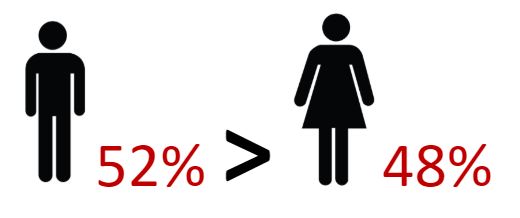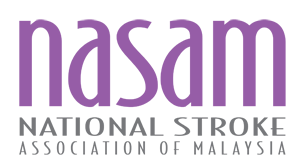Stroke Prevalence
Stroke is said to be the leading cause of chronic disability, the second leading cause of dementia, and the fourth leading cause of death in the United States (U.S.). In Malaysia, stroke was recorded as the second leading cause of death according to the Malaysian National Burden of Diseases Study and study on vital registry system in 2000.

In 2009, stroke is listed as the third leading cause of mortality for males, after ischaemic heart disease and pneumonia.

Meanwhile for females, it was ranked second after ischaemic heart disease.
The prevalence of stroke in Malaysia is estimated to be 0.3% among Malaysians during the third National Health and Morbidity Survey (NHMS) in 2006.
In the fourth NHMS survey in 2011, the prevalence of stroke was reported as 0.7%,
- 1.7% = 55-59 years
- 2% = 60-64 years
- 3% = 65-69 years
- 5% = 70-74 years
- 8% = 75 years and beyond
The same survey also illustrated higher prevalence of stroke among those divorced or widowed (2.5%) compared to single (0.1%) and married (0.9%).
Epidemiology of Stroke
Stroke Factors
The mean age of stroke onset in Malaysia was between

54.5 and 62.6 years.
A comparison of the Malaysian and Australian stroke registries on young adults aged between 18 and 49 years, showed comparable age of onset as well as gender ratio for ischaemic stroke. The mean age was 41.5±8.8 years for Malaysia and 40.1±8.8 years for Australia with a sex ratio of male to female 1.4: 1 and 1.54: 1, respectively.





References
- Aziz, Z., Lee, Y. Y., Awang Ngah, B., Sidek, N. N., Looi, I., Hanip, M. R., & Basri, H. (2015). Acute Stroke Registry Malaysia, 2010-2014: Results from the National Neurology Registry. Journal of stroke and cerebrovascular diseases: the official journal of National Stroke Association.
- Cheah, W. K., Hor, C. P., Abdul Aziz, Z., & Looi, I. (2016). A Review of Stroke Research in Malaysia from 2000 – 2014. Med J Malaysia Vol 71 Supplement 1.
- Chin, Y. Y., Harith, S., Ahmad, A., & Mukhali, H. B. (2008). Prevalence, risk factors and secondary prevention of stroke recurrence in eight countries from south, east and southeast asia: a scoping review. Med J Malaysia Vol 73 No 2.



